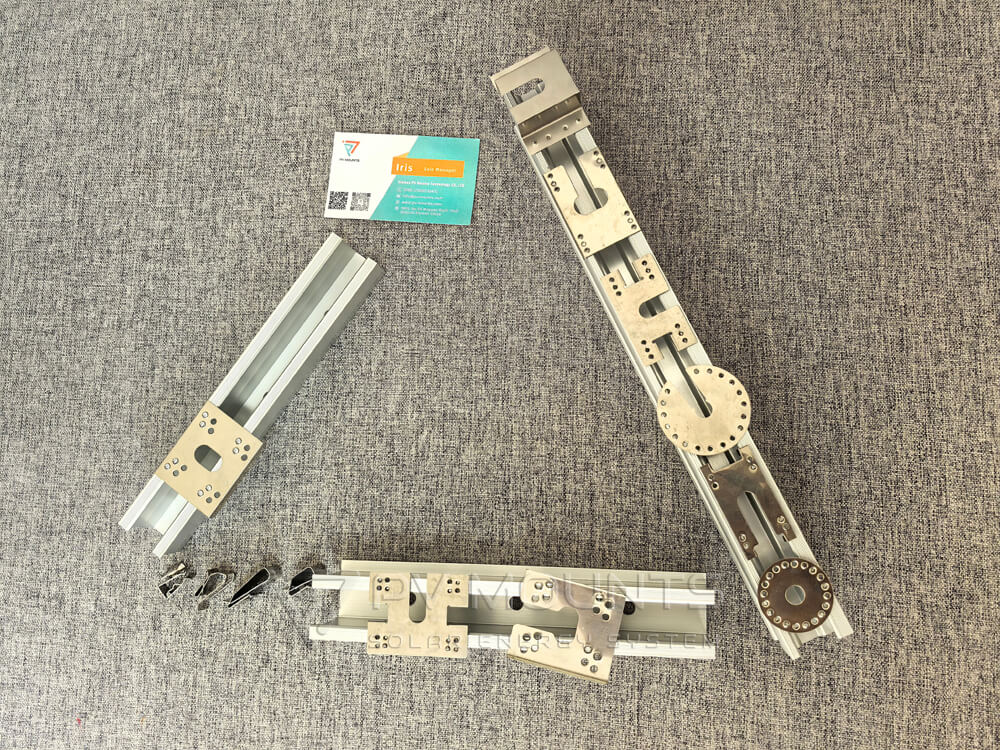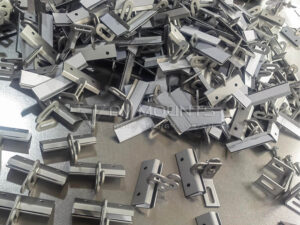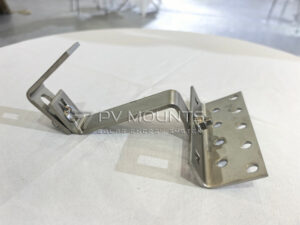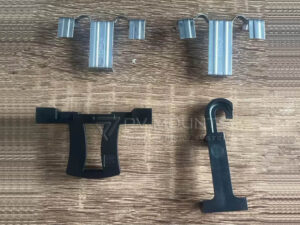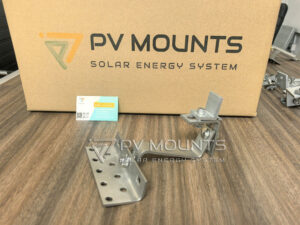جدول المحتويات
Introduction to Solar Grounding Conductor Clips
A solar energy system is only as strong as its weakest link. While solar panels, inverters, and racking systems often grab the spotlight, one small but mighty component works quietly behind the scenes—the solar grounding conductor clip.
This clip provides a reliable connection between the metal parts of solar modules and the grounding conductor. Without it, stray currents could damage equipment, create fire risks, or even endanger people working around the system. In fact, grounding is not just a technical choice—it’s a safety requirement in nearly every electrical code worldwide.
By ensuring all metal frames are bonded and grounded, grounding conductor clips protect both the investment and the people who rely on solar energy. That’s why learning how to select solar grounding conductor clip is a step that no installer, EPC contractor, or DIY enthusiast should skip.
How to Select Solar Grounding Conductor Clip
When selecting a solar grounding conductor clip, the decision should balance practicality, compliance, and long-term reliability. Here are the most important factors:
- المادة: Choose clips made of corrosion-resistant stainless steel (SUS 304 or SUS 316). Aluminum may be acceptable in dry inland areas but is less reliable near the coast.
- Certification: Look for UL 467 or IEC compliance to ensure the clip meets international safety standards.
- Ease of Use: A good clip should be easy to install without complex tools, saving time during large-scale projects.
- المتانة: Consider whether the clip can handle outdoor exposure for 25+ years, matching the lifespan of solar panels.
- Compatibility: Ensure the clip fits your solar module frames and racking system.
While cheaper clips may save pennies upfront, they often cost much more later in repairs, downtime, or failed inspections.
Types of Solar Grounding Conductor Clips
Not all grounding conductor clips are created equal. Depending on the project, you may choose from:
- Stainless Steel Conductor Clips: The most durable option, ideal for long-term reliability.
- Aluminum Conductor Clips: Lightweight and cost-effective, though less corrosion resistant.
- Universal Grounding Conductor Clips: Designed to fit multiple systems, offering flexibility but sometimes less snug fit compared to custom clips.
The choice depends on project environment, budget, and system requirements.
Material Selection for Grounding Conductor Clips
Material selection is the foundation of durability:
- SUS 304 Stainless Steel: Widely used for its good corrosion resistance and affordability.
- SUS 316 Stainless Steel: Offers higher resistance, especially in coastal or humid climates.
- Aluminum Alloy: Lightweight but prone to galvanic corrosion when mixed with other metals.
For projects near the ocean or in regions with high humidity, stainless steel is the safer and smarter choice.
Design and Compatibility Considerations
The best grounding conductor clip is one that fits perfectly with your solar equipment. Some factors to check:
- Frame Size: Clips must match module frame thickness (usually 30mm–40mm).
- Rail Mounting: Some designs attach directly to mounting rails, while others bond module frames.
- Universal vs. Custom: Universal clips work across brands but may not be as secure as custom-fit options.
A poor fit can lead to loose bonding, which compromises both safety and efficiency.
Installation Process for Grounding Conductor Clips
Correct installation ensures the clip performs as intended.
Tools Needed: No
Steps:
- Position the clip at the grounding point on the solar frame or rail.
- Insert and tighten to ensure conductivity.
- Connect grounding conductor to clip.
- Test electrical continuity across the system.
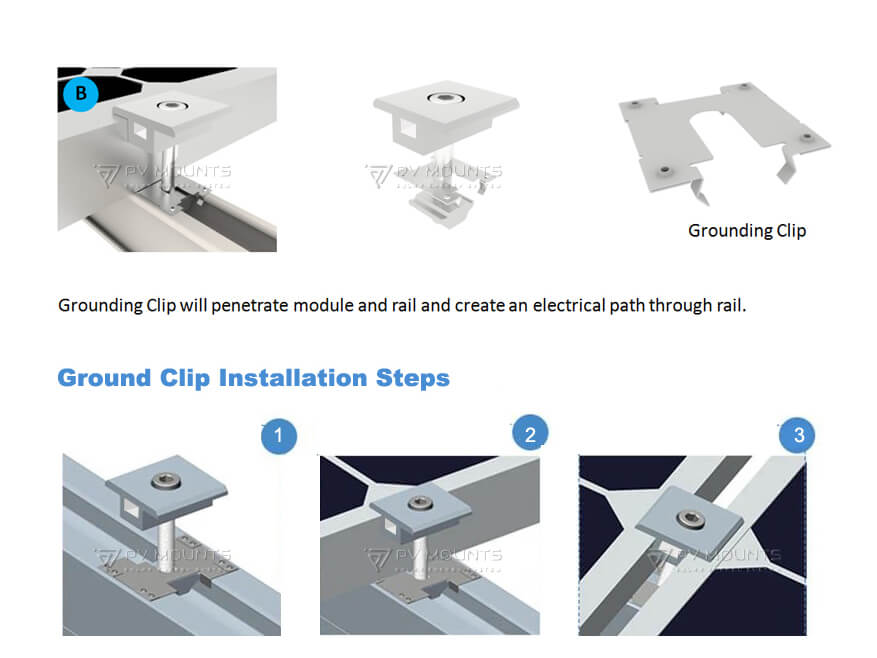
Common Errors to Avoid:
*Using incompatible metals, leading to corrosion.
*Over-tightening, which damages clips.
*Loose connections that increase resistance.
Durability and Performance in Harsh Environments
Solar systems endure all kinds of weather, from desert heat to coastal storms. A good grounding conductor clip must:
- Resist corrosion from salt, moisture, and UV exposure.
- Maintain strong electrical contact for decades.
- Handle wind loads and thermal expansion.
In the best-case scenario, a clip should last as long as the panels it protects—typically 25 years or more.
Cost Considerations and Value Analysis
Grounding conductor clips are inexpensive per unit, but the wrong choice can lead to high hidden costs.
- Cheap Clips ($0.05–$0.20): May lack certification, often made from inferior metals.
- Premium Clips ($0.25–$0.50): Usually stainless steel, tested, and certified.
For a 1MW solar project, the difference might be a few hundred dollars—insignificant compared to the risks of failure or system downtime.
Maintenance and Inspection of Conductor Clips
Though designed to be maintenance-free, grounding conductor clips should still be inspected:
- Routine Checks: During panel cleaning or annual system inspections.
- Signs of Trouble: Rust, discoloration, or loose clips.
- Replacement: If conductivity is compromised, replace immediately.
Preventive maintenance saves time and money while reducing risks.
How to select solar grounding conductor clip
Here’s a step-by-step guide tailored for first-time buyers:
- Start with Environment: Coastal areas require stainless steel, while inland dry regions may allow aluminum.
- Check Certifications: UL 467 or IEC marks or other certificaitons should be visible.
- Match Compatibility: Ensure proper fit with module frames and rails.
- Evaluate Cost vs. Quality: Don’t compromise on durability for minor savings.
- Ask for Samples: Test before bulk purchasing.
- Work with Trusted Suppliers: Always choose companies with strong track records.
This method ensures you choose clips that are safe, durable, and efficient.
FAQs on Solar Grounding Conductor Clips
Q:What does a solar grounding conductor clip do?
It bonds the solar panel’s metal frame to the grounding conductor, preventing electric shock and damage.
Q: How many grounding conductor clips are needed?
Typically one per module, though requirements vary by system design.
Q:Can I mix aluminum and stainless steel clips?
Not recommended, as galvanic corrosion may occur.
Q: Do grounding conductor clips need regular maintenance?
Minimal, but annual inspections are recommended.
Q: How long should grounding conductor clips last?
High-quality stainless steel clips can last 25+ years, matching solar panel lifespans.
الخاتمة
Selecting the right solar grounding conductor clip may seem like a small task, but it carries enormous weight in ensuring safety, compliance, and long-term system performance. By focusing on material, certification, compatibility, and supplier reliability, you can avoid pitfalls and secure a system built to last decades.
Always remember—the cheapest clip today could become the most expensive mistake tomorrow. Choose wisely, and your solar investment will stay safe, efficient, and trustworthy.
📩 Ready to upgrade your mounting solution?
Contact PV Mounts today for custom design consultations, quick prototyping, and global delivery support. Let’s power your solar project — the right way, from the roof up.
Whether you’re exploring your first order or scaling a mature brand, our team can help you:
- Optimize your solar mounting system and accessories supply chain
- Develop unique solar mounting system and accessories
- Manage low-risk MOQs with full OEM/ODM support
- Access sample kits with real-time logistics
📩 Email to info@pv-mounts.com or message on WhatsApp: +86-178 5013 2473
📦 Ask about our latest solar grounding clip and free sample.We only require small MOQ solar grounding clip. Welcome your trial order.


